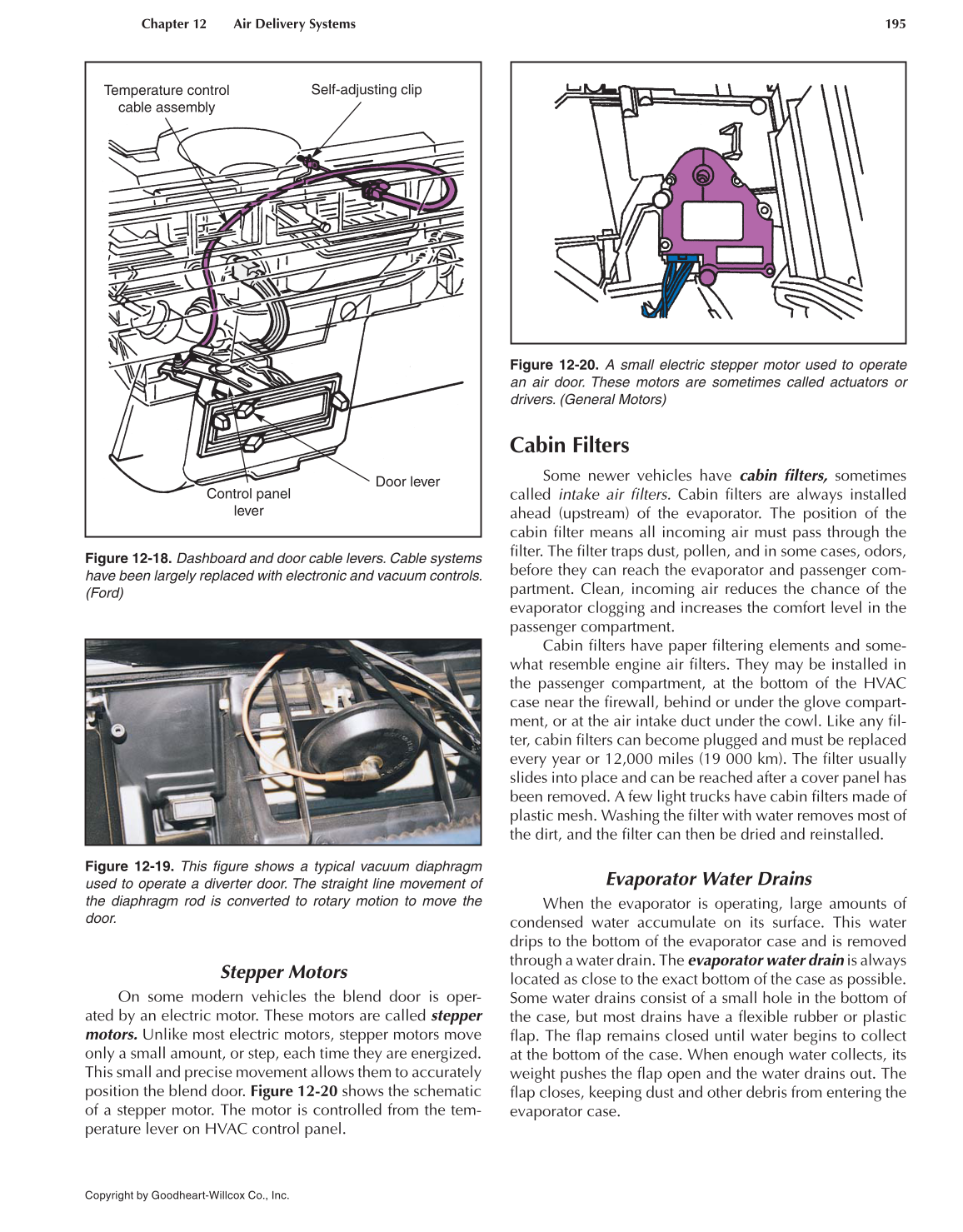Chapter 12 Air Delivery Systems 195
Copyright by Goodheart-Willcox Co., Inc.
Stepper Motors
On some modern vehicles the blend door is oper-
ated by an electric motor. These motors are called stepper
motors. Unlike most electric motors, stepper motors move
only a small amount, or step, each time they are energized.
This small and precise movement allows them to accurately
position the blend door. Figure 12-20 shows the schematic
of a stepper motor. The motor is controlled from the tem-
perature lever on HVAC control panel.
Cabin Filters
Some newer vehicles have cabin fi lters, sometimes
called intake air fi lters. Cabin fi lters are always installed
ahead (upstream) of the evaporator. The position of the
cabin fi lter means all incoming air must pass through the
fi lter. The fi lter traps dust, pollen, and in some cases, odors,
before they can reach the evaporator and passenger com-
partment. Clean, incoming air reduces the chance of the
evaporator clogging and increases the comfort level in the
passenger compartment.
Cabin fi lters have paper fi ltering elements and some-
what resemble engine air fi lters. They may be installed in
the passenger compartment, at the bottom of the HVAC
case near the fi rewall, behind or under the glove compart-
ment, or at the air intake duct under the cowl. Like any fi l-
ter, cabin fi lters can become plugged and must be replaced
every year or 12,000 miles (19 000 km). The fi lter usually
slides into place and can be reached after a cover panel has
been removed. A few light trucks have cabin fi lters made of
plastic mesh. Washing the fi lter with water removes most of
the dirt, and the fi lter can then be dried and reinstalled.
Evaporator Water Drains
When the evaporator is operating, large amounts of
condensed water accumulate on its surface. This water
drips to the bottom of the evaporator case and is removed
through a water drain. The evaporator water drain is always
located as close to the exact bottom of the case as possible.
Some water drains consist of a small hole in the bottom of
the case, but most drains have a fl exible rubber or plastic
fl ap. The fl ap remains closed until water begins to collect
at the bottom of the case. When enough water collects, its
weight pushes the fl ap open and the water drains out. The
fl ap closes, keeping dust and other debris from entering the
evaporator case.
Figure 12-18. Dashboard and door cable levers. Cable systems
have been largely replaced with electronic and vacuum controls.
(Ford)
Temperature control
cable assembly
Self-adjusting clip
Control panel
lever
Door lever
Figure 12-20. A small electric stepper motor used to operate
an air door. These motors are sometimes called actuators or
drivers. (General Motors)
Figure 12-19. This fi gure shows a typical vacuum diaphragm
used to operate a diverter door. The straight line movement of
the diaphragm rod is converted to rotary motion to move the
door.
